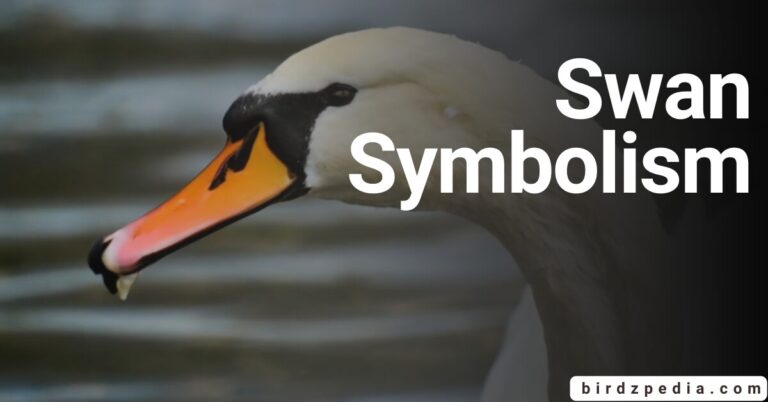Fish Crow [Corvus ossifragus] Facts, Sounds, Habitat
Scientific Classification
| Kingdom | Phylum | Class | Order | Family | Genus | Species |
|---|---|---|---|---|---|---|
| Animalia | Chordata | Aves | Passeriformes | Corvidae | Corvus | ossifragus |
Fish Crow
The fish crow (Corvus ossifragus) is found in wetland areas in the eastern and southeast parts of the United States. These marsh habitats have become home to this specific species of crow. Considering that fish crows are small birds, the average adult weight falls between 280 and 320
grams (9.9–11.3 oz) for males and 247–293 grams (8.7–10.3 oz) for females. Males often have a somewhat larger wingspan, ranging from 278 to 292 millimeters (10.9–11.5 in), whereas females normally display an average range of 264–277 millimeters (10.4–10.9 in). The bird’s body measures about 36–40 cm (14–16 in) in length overall.

Summary
- Description:
- Size: Approximately 36–40 centimeters (14–16 in) in length.
- Weight:
- Males: 280–320 grams (9.9–11.3 oz)
- Females: 247–293 grams (8.7–10.3 oz)
- Wingspan:
- Males: 278–292 millimeters (10.9–11.5 in)
- Females: 264–277 millimeters (10.4–10.9 in)
- Distribution and Habitat:
- Found in wetland areas.
- Geographical Range: Eastern and southeastern regions of the United States.
- Behavior:
- Adaptable to wetland environments.
- Social birds, often found in groups.
- Vocalizations include distinct calls.
- Diet:
- Omnivorous diet.
- Feeds on a variety of food including small fish, invertebrates, and carrion.
- Breeding:
- Breeding season typically corresponds with the spring.
- Constructs nests in trees using twigs and other materials.
- Conservation:
- Generally, not considered globally threatened.
- Population status can vary locally.
Taxonomy and etymology
It is , scientifically known as Corvus ossifragus, was given the binomial name by the Scottish naturalist Alexander Wilson in 1812 for the fifth edition of his extensive work, American Ornithology. This binomial, which has Latin origins, consists of the words “Corvus,” which means
“raven,” and “ossifragus,” which means “bone-breaker.” The roots of these words are “os” or “ossis,” which means “bone,” and “frangere,” which means “to break.” Wilson is also credited with coining the commonly used English term “fish crow,” linking it to the bird’s aquatic feeding
habits based on information he received from nearby fisherman. Wilson noted that they was smaller than the American crow and distinguished it from John Bartram’s enormous beach crow thanks to his keen observations. Despite the lack of a clear taxonomic relationship, DNA
sequencing indicates that the Corvus ossifragus nearest relatives are the palm (C. palmarum) and Jamaican (C. jamaicensis) crows, which together form a Nearctic clade. Once thought to be conspecific subspecies of the Corvus ossifragus due to their similar morphology, the Sinaloa crow (C.
sinaloae) and Tamaulipas crow (C. imparatus) have now been recognized as separate species.

Description
- It is a small bird.
- Average weight: Males 280–320g, Females 247–293g.
- Male wingspan: 278–292mm, Female wingspan: 264–277mm.
- Total body length: 36–40cm.
- Corvus ossifragus resembles American crow but is smaller with silkier plumage.
- Upperparts have blue or blue-green sheen; underparts more greenish.
- Eyes are dark brown; visual differences evident when seen side by side or heard calling.
- Bill is usually slimmer than American crow; differentiation clearer when seen together.
- Visual differentiation challenging and often inaccurate.
- They have slender bills and feet; small sharp hook at the end of the upper bill.
- Shorter legs when walking; distinctive behavior when calling, hunching and fluffing throat feathers.
vocalization
Its vocalization is the most noticeable external feature that distinguishes this species from other American crow species. They are known for their nasal “ark-ark-ark” or melancholy “waw-waw” calls. For bird enthusiasts, the mnemonic device “Just ask him if he is an American crow” is
a useful resource. To differentiate between the two species, particularly in regions where their separate ranges meet, if he responds “no,” he is a Corvus ossifragus. This is based on the observation that the American crow’s common call is a clear “caw caw,” whereas they produces a nasal
“nyuh unh” cry. Additionally, the fish crow produces a single, “cahrrr“-sounding call.

Distribution and Habitat
This specific species is found all along the eastern coastal of the United States, from Rhode Island in the north to Key West in the south, and also stretches westward along the northern coastline of the Gulf of Mexico. Riverbanks, interior lakes and marshes, coastal marshes, beaches, and the
immediate vicinity are among the varied environments that these birds seem to favor. Moreover, observations of Corvus ossifragus have been made along several inland river systems, indicating that their range has expanded along rivers since the early 1900s. With established breeding
populations found in Lake Ontario, the Corvus ossifragus remarkable rapid migration into Canada since 2012 is noteworthy.
Species in same Genus
| Species | Common Name |
|---|---|
| Corvus brachyrhynchos | American crow |
| Corvus corone | Carrion crow |
| Corvus splendens | House crow |
| Corvus cornix | Hooded crow |
| Corvus frugilegus | Rook |
| Corvus corax | Common raven |
| Corvus albus | Pied crow |
| Corvus rhipidurus | Fan-tailed raven |
| Corvus crassirostris | Thick-billed raven |
| Corvus imparatus | Tamaulipas crow |
| Corvus orientalis | Eastern Carrion crow |
Behavior
Diet
The bird’s main sources of food are the ground and shallow water, where it hovers and uses its feet to pull food items out of the water. Their diet is omnivorous; it includes a range of small crustaceans, such as crabs and shrimp, various invertebrates, stranded fish, and
live fish when the circumstances allow for their capture. Other foods in the diet are bird nestlings and eggs, small reptiles, fruits from a variety of plants, cereals, peanuts, and, when available, human leftovers.

Breeding
Usually built at a high point in the tree, the nest is sometimes located close to other nests of the same species in other trees, forming loose, little colonies. Four or five pale blue-green eggs with areas of olive-brown make up the typical clutch. With every attempt at reproduction, Corvus
ossifragus build a new nest. There is a report of an incident in which two Corvus ossifragus raised a juvenile blue jay over several week
Threats
| Threat | Description |
|---|---|
| Habitat Loss | Urbanization, deforestation, and land development leading to the loss of nesting and foraging sites. |
| Pollution | Water pollution affecting clean water and food sources, especially in coastal and river habitats. |
| Human Disturbance | Increased human activities disrupting nesting and foraging areas, leading to stress and reduced reproductive success. |
| Climate Change | Altered climate patterns impacting prey availability, nesting seasons, and overall ecosystem dynamics. |
| Predation | Nest predation by other birds, mammals, or birds of prey, posing a threat to eggs and nestlings. |
| Contaminants | Exposure to pesticides, chemicals, and pollutants adversely affecting the health of Corvus ossifragus |
| Collision with Structures | Accidental collisions with man-made structures, such as buildings and power lines, causing injuries or fatalities. |
| Disease | Spread of diseases within the Corvus ossifragus population or transmitted from other bird species. |

Conservation
In comparison to the American crow, this species appears to exhibit greater resistance to the West Nile virus. They have demonstrated survival rates reaching up to 45%, a stark contrast to the nearly 0% survival rates observed in American crows.
Lifespan
In the wild, They normally have a lifespan of 7 to 8 years. However, due to things like predation, environmental circumstances, and the availability of food supplies, some people may live longer while others may have shorter lifespans. They may live longer in captivity since there are
considerably less hazards to them than there are in the wild. Similar to numerous avian species, the precise longevity may be contingent on a range of characteristics and personal situations.
Common Names in Different Languages
| Language | Common Name |
|---|---|
| English | Fish Crow |
| Spanish | Cuervo Pescador |
| French | Corneille des pêches |
| German | Fischkrähe |
| Italian | Corvo pescatore |
| Portuguese | Corvo-pescador |
| Dutch | Visraaf |
| Russian | Рыбный ворон (Rybny voron) |
| Japanese | フィッシュクロウ (Fisshu Kurou) |
| Chinese | 鱼鸦 (Yú yā) |
| Hindi | मत्स्य कौवा (Matsya Kauva) |
| Arabic | غراب السمك (Ghurab al-samak) |
FAQs
- What is a Corvus ossifragus?
- One species of crow native to the Southeast of the United States is the Corvus ossifragus. Though somewhat smaller, it resembles the American crow in appearance.
- How can I distinguish a Corvus ossifragus from other crows?
- Compared to American crows, They are smaller and have a unique vocalization that is frequently referred to as a nasal “caw.” They can be distinguished from other crow species by their cries.
- Where do Corvus ossifragus live?
- Wetlands, riversides, and coastal areas are typical habitats for Them. They have excellent adaptations to a wide range of settings, including both urban and natural ones.
- Why are they called “fish crows”?
- The term derives from their affinity for coastal regions and their propensity to consume fish and other aquatic food sources. They have a reputation for taking advantage of food supplies along shorelines.
- What do Corvus ossifragus eat?
- Although they eat a lot of fish, They are omnivores and also eat a wide range of other foods, such as insects, small vertebrates, and carrion. They feast on opportunities.
- Are Corvus ossifragus migratory?
- Although they are thought to be non-migratory, some of them might travel short distances in response to the availability of food or the weather.
- Do Corvus ossifragus exhibit intelligent behavior?
- Fisherman crows are renowned for their intelligence, just like other crow species. They exhibit the ability to solve problems and can use tools to get food.
- What is the conservation status of Corvus ossifragus?
- They are thought to not be in worldwide danger, and their numbers are usually steady. However, habitat loss and other environmental issues may pose problems for local populations.


![Red-Billed Choughs[Pyrrhocorax pyrrhocorax]: Flight, Sounds, Conservation, and More](https://birdzpedia.com/wp-content/uploads/2023/12/Red-billed-cough-768x402.png)
![Unique Discoveries of the Flightless Cormorant [Nannopterum Harrisi]](https://birdzpedia.com/wp-content/uploads/2024/01/Flightless-Tocuan-768x402.jpg)

![Verreaux’s Eagle [Aquila verreauxii] Overview, Habitat, Sounds](https://birdzpedia.com/wp-content/uploads/2023/12/Black-Oystercatcher-768x402.png)

